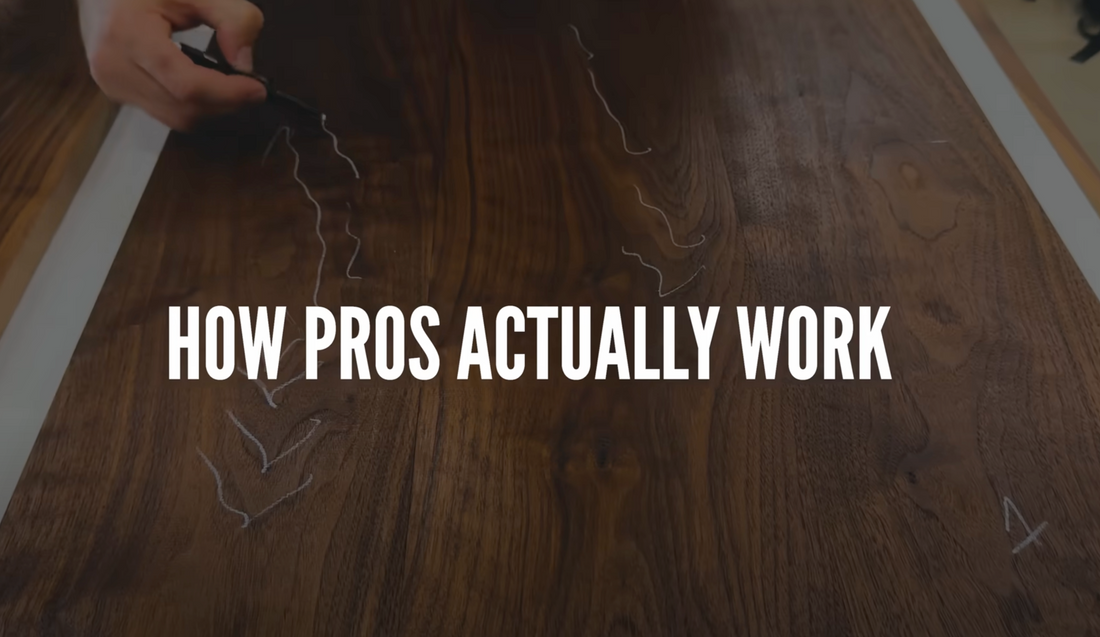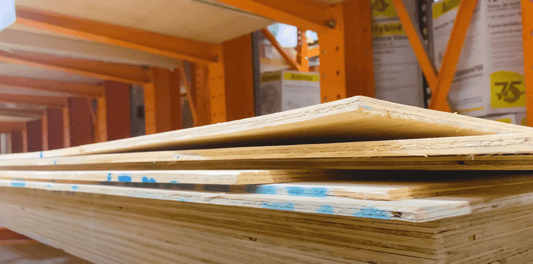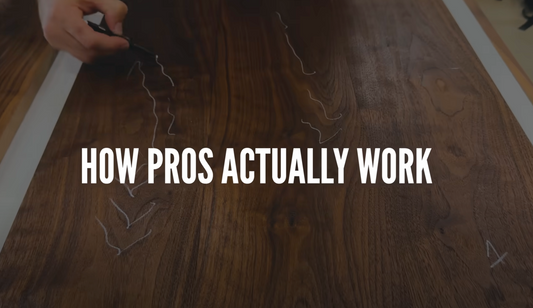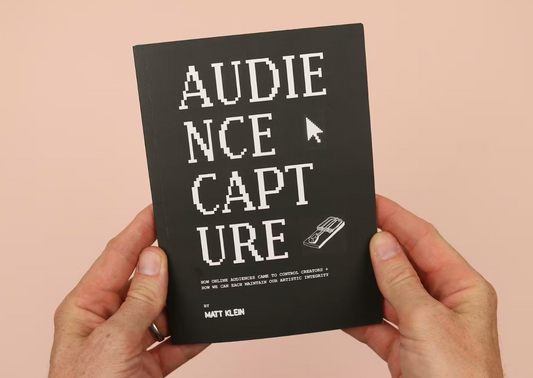
Why Grain Matching Is the Secret to Next-Level Woodworking
Share
Watch The Video Here
When we were building the walnut vanity for my workshop bathroom, I thought I knew how to pick lumber. Check for straight boards. Avoid major knots. Grab what's cheapest and get on with it.
But then I watched my friend Asher dig through a dingy warehouse full of walnut… and everything changed.
The Grain-First Approach
Asher’s process starts with one thing: grain.
Before checking for price or straightness, he looks at how the grain flows. Is it expressive? Is it consistent across multiple boards? Does it tell a story when you line the pieces up side-by-side?
We spent 30+ minutes just digging through stacks of walnut. Sorting, flipping, and comparing until he found boards that flowed like a single continuous piece. I thought it was overkill… until we started laying out the panels.
The result? Seamless transitions, balanced color tones, and grain that actually felt like part of the design.
Why It Matters
Grain matching isn’t just about looks. It’s about intentionality.
When your eye flows naturally across a panel or door front, it subconsciously tells the viewer: this was made with care.
Especially in fine furniture or custom cabinetry, grain direction can make or break the visual cohesion of a piece.
You’re not just working with wood—you’re working with a purpose.
Before and After
Here’s a side-by-side shot of the panels before and after grain matching:
Before:

After:

Notice how the left side feels more chaotic? That’s how I used to build. Random boards, slapped together. The right side is after Asher laid everything out with intent. Huge difference.
How To Grain Match (Without Losing Your Mind)
- Sort for flow: Don’t just grab what’s on top. Take time to find boards with similar tone and direction.
- Preview with mineral spirits: Wipe a little on to see how the finished color will look.
- Mark and sequence: Once you’ve got a set you like, label and arrange them before you cut.
- Match your cuts: Try to keep long, flowing pieces intact when possible—especially on doors or wide drawer fronts.
Final Thoughts
This one shift changed how I see lumber, and I’ve never looked at a board the same way since.
If you’ve ever wanted your builds to feel more polished, grain matching is one of the best-kept secrets in woodworking.
It costs you nothing but a little extra time… and the results speak for themselves.



